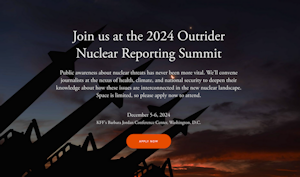SEJournal Online is the digital news magazine of the Society of Environmental Journalists. Learn more about SEJournal Online, including submission, subscription and advertising information.
 |
SEJournal is the weekly digital news magazine of the Society of Environmental Journalists. SEJ members are automatically subscribed. Nonmembers may subscribe using the link below. Send questions, comments, story ideas, articles, news briefs and tips to Editor Adam Glenn at sejournaleditor@sej.org. Or contact Glenn if you're interested in joining the SEJournal volunteer editorial staff.
NEW: EJ TransitionWatch
TipSheet | Reporter's Toolbox | Backgrounders | WatchDog |
BookShelf | EJ Academy | EJ InSight | Voices of Environmental Justice |
Features | FEJ StoryLog | Freelance Files | Inside Story | SEJ News
About SEJournal Non-Members: Subscribe Now
-
Advertise in the digital SEJournal! Find advertising information and rates here.
(SEJ members: Advertise your recent book in the digital SEJournal — only $50.)














 The Mekong River is a lifeline for millions and a biodiversity hotspot. But massive hydropower projects have put the Southeast Asian body of water, as well as the lives of the people and natural world around it, in serious jeopardy. In the latest BookShelf, writer Melody Kemp, who lives alongside the legendary river, reviews two volumes that help explain what’s killing the Mekong.
The Mekong River is a lifeline for millions and a biodiversity hotspot. But massive hydropower projects have put the Southeast Asian body of water, as well as the lives of the people and natural world around it, in serious jeopardy. In the latest BookShelf, writer Melody Kemp, who lives alongside the legendary river, reviews two volumes that help explain what’s killing the Mekong.







 Advertisement
Advertisement 



